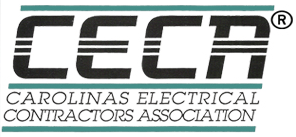Questions and Answers to Navigating in the CECA Code Course Continuing Education Site
![]()
Online Code Course Test Frequently Asked Questions
What can I expect when I take the Code Course Continuing Education from this web site? An easy format that will grade your test and notify you at completion whether you passed or failed. This testing format is built to the needs and interests of electrical contractors. There is an interactive sample area and downloadable handouts to enhance your learning experience. Feedback is provided with all questions which reinforce the Code Course content. To get a better
idea of what we have to offer, please visit our Sample Test area.
The NEC test for Virginia meets the requirements of the Virginia Department of Professional and Occupational Regulation for the Commonwealth of Virginia. The NEC test for Virginia meets the requirements of the Virginia Department of Professional and Occupational Regulation for the Commonwealth of Virginia. The test for VA is good for 3 credit hours, which satisfies the Virginia requirement of 3 credit hours during the two year term of the license. Hours can not be banked for Virginia licensing.What are the new continuing education requirements for the NCBEEC? While the requirement is still that each licensee must have 8 hours of continuing education, starting in July 1 2008 the new annual requirement is that 4 of the hours must be obtained from a classroom setting and the other 4 hours may be obtained by several means including tests (online and paper form). CECA presently offers testing in paper form and online form. CECA offers classroom sessions as well. Please check our Association web site at carolinaseca.org for updates on classroom sessions.
CECA also offers additional free classroom sessions to CECA Members. If you are interested in membership please either contact the CECA office or click here for the member application.
These courses are not sponsored by the NC Electrical Licensing Board or the Virginia Department of Professional and Occupational Regulation.
